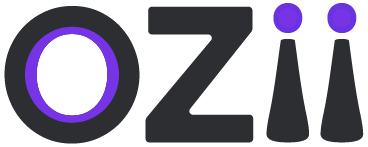
Implementing HR Scorecard: Creation & Guidelines

Introduction
The HR Scorecard is a potent strategic instrument that closes the gap between HR activities and business goals. Through the effective application of an HR Scorecard, organizations can gauge HR performance, connect workforce strategies to corporate goals, and improve process management for sustainable success. A strong HR Scorecard enables organizations to monitor critical HR deliverables and gauge their contribution to business growth.
Utilizing OZii's HRMS software, companies are able to build an HR Scorecard that gives them actionable intelligence on workforce performance, maximizes resource utilization, and aids strategic decision-making. This step-by-step guide will take you through the process of building and executing an HR Scorecard effectively.
What is an HR Scorecard?
An HR Scorecard is an organized system that enables HR departments to quantify the success of their efforts towards achieving the company's financial and operating objectives. It translates HR activities into quantifiable business results, making HR functions proactive as well as reactive in enabling overall company development.
By integrating OZii’s human resource software, organizations can automate and streamline the implementation of an HR Scorecard, making it easier to track performance metrics and identify areas for improvement.
Steps to Create an HR Scorecard
1. Define Business Strategy
To align HR initiatives with business goals, the first step is to understand the company’s long-term strategic objectives. This includes:
Identifying business priorities such as employee retention, leadership development, or performance optimization.
Aligning HR strategies with key operational goals.
Using OZii’s office management software to integrate HR objectives seamlessly with business workflows.
2. Identify Key HR Deliverables
HR deliverables should be clearly defined to measure success effectively. These deliverables include:
Talent acquisition and retention.
Employee engagement and satisfaction.
Performance management and HR appraisal.
Compliance and policy adherence.
With OZii’s task management tools, companies can break down HR deliverables into clear, actionable tasks that contribute to overall business objectives.
3. Develop HR Policies and Practices
For an HR Scorecard to be effective, HR policies must be structured to support organizational goals. Key considerations include:
Implementing structured appraisal systems such as 360-degree feedback and performance reviews.
Ensuring consistency and compliance using OZii’s HRMS software.
Establishing frameworks for employee rewards and recognition.
4. Select Key Performance Indicators (KPIs)
The success of an HR Scorecard depends on measurable KPIs that accurately reflect HR performance. Common HR KPIs include:
Employee turnover rate
Average time-to-hire (tracked using an applicant tracking system)
Training effectiveness score
Payroll accuracy and compliance (supported by payroll software)
OZii’s reporting and analytics tools provide real-time insights into these KPIs, ensuring that HR teams can make data-driven decisions to enhance performance.
5. Implement and Monitor the HR Scorecard
Once the Scorecard is developed, implementation requires:
Training HR professionals and department heads on how to use the Scorecard effectively.
Leveraging OZii’s human resource software for real-time tracking of HR performance.
Continuously updating KPIs based on evolving business needs and employee feedback.
HR Scorecard Components
An effective HR Scorecard consists of four key components:
1. Financial Perspective
How HR initiatives impact the company’s profitability and cost efficiency.
Reducing turnover to lower hiring and training costs.
Enhancing payroll management with automation through payroll software.
2. Customer Perspective
Employee satisfaction and how it is reflected in better customer service.
Measuring the impact of engagement initiatives on customer retention.
3. Internal Process Perspective
Effectiveness of HR processes, such as attendance management systems.
Recruitment, onboarding, and training process improvements.
4. Learning and Growth Perspective
Employee development and upskilling initiatives.
Impact of leadership training programs.
Best Practices for Implementing HR Scorecard
For a successful HR Scorecard implementation, organizations should:
Regularly review and update HR metrics to reflect changing business needs.
Integrate HR strategies with broader business planning.
Utilize software solutions like OZii’s HRMS software to automate HR tracking and analysis.
Overcoming Common Challenges in HR Scorecard Implementation
1. Resistance to Change
Many organizations struggle with resistance from employees and managers when introducing structured evaluation systems. Solutions include:
Educating employees on the benefits of an HR Scorecard.
Encouraging participation through transparent communication.
2. Data Inaccuracy
Inaccurate or incomplete data can lead to ineffective decision-making. To address this:
Use OZii’s human resource software for automated data collection.
Conduct regular audits of HR metrics to ensure accuracy.
3. Lack of Strategic Alignment
HR metrics should directly contribute to corporate goals. To ensure alignment:
Regularly update the Scorecard to reflect evolving business objectives.
Use OZii’s process management tools to align HR strategies with company priorities.
Case Studies: How OZii Transformed HR Scorecard Implementation
Case Study 1: Tech Company Enhancing Talent Management
A growing tech company struggled with high employee turnover. After implementing OZii’s HR Scorecard, they saw:
A 30% reduction in employee turnover.
Improved resource allocation for employee development.
Higher engagement levels due to structured performance tracking.
Case Study 2: Retail Business Improving Productivity
A retail business facing inefficiencies in workforce management used OZii’s HRMS software to:
Optimize attendance management systems.
Improve productivity by 15% through better task management.
Enhance employee satisfaction through regular feedback cycles.
Case Study 3: Healthcare Organization Streamlining HR Operations
A large healthcare provider needed a more structured approach to performance tracking. With OZii’s office management solutions, they:
Automated performance reviews for medical staff.
Reduced compliance risks related to HR processes.
Increased employee training completion rates by 40%.
Future Trends in HR Scorecard Implementation
With evolving workplace dynamics, future trends include:
AI-driven HR analytics: Using predictive analytics to forecast workforce trends.
Gamification in HR: Enforcing reward-based appraisal systems to enhance engagement.
Real-time performance monitoring: Transcending annual reviews to continuous feedback models.
Conclusion
Implementing an HR Scorecard is crucial for aligning HR initiatives with business success. By leveraging OZii’s advanced HR solutions, companies can develop a structured, data-driven approach to HR performance evaluation. With process automation, real-time analytics, and seamless HR integration, businesses can create an HR Scorecard that not only measures performance but also drives growth and efficiency.
With proper tools and techniques in hand, an HR Scorecard can make HR a strategic business partner, turning the function away from its administrative roots for long-term organizational success.
HRMS









